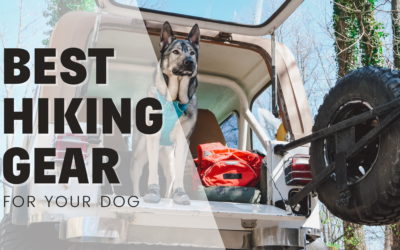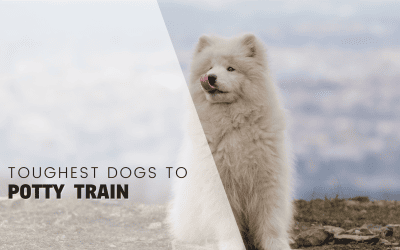Welcome to our latest barktastic blog post all about… you guessed it, sighthounds! For those who might be wondering, “What makes a dog a sighthound?” and “Is my Arnie a sighthound? He really loves that laser pointer!” – sit, stay, and read on! We’re about to go on a tail-wagging adventure that will take us back thousands of years and into the open desert.
From the iconic Greyhound to the regal Saluki, sighthounds have long delighted humans with their grace, swiftness, and not to mention, their extraordinary sight. These breeds are so rebarkable, they flip the script on traditional dog hunting techniques. Moving boldly beyond sniffing around, sighthounds are all about seeing their prey and chasing them down! Sight and speed? Now, that’s a package deal!
In our journey today, we’ll explore the background of these fascinating dogs, learn about training tips specific to sighthounds (ever heard of ‘lure coursing’?), and discover what makes sighthounds one of the most pawsome groups within the canine kingdom. So, leash up and pop on those dog-walking sneakers – we’re about to embark on a heckin’ good adventure in the world of these sightseeing hounds!

Why Are Sighthounds Called Sighthounds?
Sighthounds, get their unique name from their extraordinary hunting strategy. While many other dogs, like the mighty scent hounds (like coonhounds), rely on their sniffer to track down and catch prey, sighthounds have their own superpower—using their keen sight and jaw-dropping speed to spot and chase prey down.
They have been selectively bred for generations to focus on the orient part of the predatory motor pattern, and focus that attention to their eyes, which is why most sighthounds have proportionately larger eyes, and long and narrow heads (I.e. a dolichocephalic skull) which increase their vision to a whopping 270° (20° more than the average dog).
Their body is also uniquely shaped to be light long legged and lithe. That streamlined body shape is designed to keep them on a long stride and help this group of super speedy dogs outpacing small prey, (and hopefully not small pets!) and some sighthounds breeds also have developed differently shaped paws – known as “Hare feet” because of their longer, skinnier paw that helps them run even faster.
These marvelous, quick-footed dogs come in all shapes and sizes, from the petite Italian Greyhound to the sleek and speedy Greyhound. But what all these dogs have in common is their loving dedication to doing what they do best: being sight-driven marvels of nature.
A Quick History of Sighthounds
Sighthounds, affectionately known as gazehounds, are believed to be some of the oldest types of dogs, with a history tracing back at least 5,000 years to the middle east and ancient egypt. Fascinatingly, the earliest presumed remnants of a sighthound were found in an archaeological site called Tell Brak. The estimated shoulder height of the dog was around 54 cm, which draws a parallel with today’s Saluki, thus hinting that these dogs might have been companions to humans for thousands of years, using their keen eyesight and great speed to hunt all manner of large game and even predators.
Over the years, a wonderful variety of sighthound breeds have graced our homes and hearts. Some of the more well-known sighthound all-stars are the Greyhound, Saluki, Whippet, Borzoi, Irish Wolfhound, and Scottish Deerhound. These dogs carry an intriguing trait – while most dogs use their sense of smell when hunting, sighthounds primarily rely on their sight (hence the name). Spotting movement from afar, they are expected to chase down their prey, using their remarkable speed and agility.
Sighthounds have historically found their homes in wide-open lands and desert regions, like Africa and possibly Arabia. Their roles within human communities consisted of hunting prey across the wide expanses of land, chasing down deer or hare with their lightning-fast speed.
Fast forward to modern times, the family of sighthounds has branched out into an assortment of breeds, including the dashingly low-slung Dachshund and the super-speedy Greyhound. What unites this diverse group of dogs is their enduring dedication to the tasks they were bred for, carrying a long history of faithful service into the present day.
Isn’t it just rebarkable how these noble hounds have stood the test of time?!

List of Sighthounds
not all of these are recognised by the American kennel club, but here’s a number of the awesome sight hounds from the gentle giants to the long legs Italian greyhound!
- Afghan Hound: Originating from Afghanistan, these dogs are known for their long, silky fur and a happy, clown-like personality.
- Azawakh: Tall, slim and elegant, the Azawakh from West Africa is known for its protective instincts and loyalty.
- Basenji: Known as the “barkless dog”, this small, athletic breed was originally developed in Central Africa for hunting.
- Borzoi (Russian Wolfhound): Bred for hunting wolves in Russia, these large dogs are known for their speed and endurance and their long hair!
- Chippiparai: From Southern India, this breed is characterized by a streamlined body built for speed, making it great for hunting.
- Chortaj Borzaja: Known for their agility and speed, this breed was originally bred in Russia for hunting.
- Cretan Hound (or Kritikos Lagonikos, Cretan Tracehound): One of the oldest hunting breeds in Europe, they hail from the island of Crete.
- Galgo Español (Spanish Greyhound): A Spanish breed used for hunting and coursing game, they are graceful and similar in appearance to the Greyhound.
- Greyhound: Known for their impressive speed, Greyhounds are gentle, laid-back dogs that were originally bred for coursing game.
- Hellenic Sighthound: Hailing from Greece, this breed was used for hunting hare and is known for their speed and agility.
- Hortaya Borzaya: These are versatile Russian sighthounds bred for hunting a variety of game, from hares to wolves.
- Ibizan Hound: Native to the Island of Ibiza, prized for its ability to chase down rabbits, and it’s known for its intelligence and stamina.
- Irish Wolfhound: One of the tallest dog breeds, they were originally bred for hunting wolves and are known for being gentle and friendly.
- Italian Greyhound: Smaller than their Greyhound cousins, these small size, sleek and petite dogs are known for their affectionate and playful nature, and one of the most popular sighthound breeds.
- Kanni: A rare sighthound breed from South India, known for its agility and loyalty.
- Magyar Agár (Hungarian Greyhound): Thicker and more robust than a Greyhound, this breed exhibits speed, stamina, and a compelling chase drive.
- Mudhol Hound (Caravan Hound): An Indian breed known for its sleek body, speed, and endurance, mostly used for hunting and guarding.
- Norfolk Greyhound (or English Greyhound): Known for its agility and speed, this breed hailed from England and was used for hunting small game.
- Pharaoh Hound: Known for their elegance and good nature, they were originally bred for hunting rabbits in Malta.
- Polish Greyhound: A strong, muscular breed developed for hunting in Poland, it’s known for its intelligence and independent nature.
- Rajapalayam: A large, white sighthound from Southern India originally bred to hunt wild boar.
- Rampur Greyhound: Bred in Northern India for hunting, these dogs are powerful, speedy, and have a distinctive, regal look.
- Saluki (Persian Greyhound): One of the oldest dog breeds, Salukis are graceful and resilient, used for hunting hares and gazelles.
- Scottish Deerhound: These large and gentle dogs were bred for deer hunting, and are recognized for their unique, rugged coat.
- Sloughi (Arabian Greyhound): Known for their smooth coat, grace, and speed, they were originally used for hunting game in North Africa.
- Taigan: An ancient sighthound breed from Kyrgyzstan, known for their speed, agility, and high-altitude adaptability.
- Whippet: A medium-sized sighthound known for their speed and agility. Originally used for hunting and racing, they are now popular companion dogs.

Caring For Your Sighthound
Luckily, they’re not that high maintenance because of their short coats – however, sighthound dogs don’t thrive in the cold and may flat out refuse. Regular claw maintenance, brushing (appropriate to fur type), regular bathind and teeth brushing will mean your sighthound is well cared for!
Training Your Sighthound
Opt for private training if you can, because your sighthound is a sensitive, gentle soul. Your dog will likely not be a big fan of group classes.
These regal runners are phenomenal couch dwellers. Quiet calm, unobtrusive, stoic, sensitive, not good at rough play, flight risk, keep prey drive, often labelled “Stubborn” or independent.
Socialise gently, he won’t necessarily love being bundled by a local labrador pup, and he won’t enjoy being roughly handled by kids. Take it slow! Show him patience, and he’ll give it back.
Do focus on teaching your sighthound calm behavior around small fluffies as smaller animals (particularly rabbits…) as part of their socialization, will be hard for sighthound owners to teach good manners around due to their strong prey drive that is colossal due to selective breeding them for this for thousands of years. Small animals will be your dog’s hardest chore.
If you’re struggling with that? You’re going to absolutely need to have tonnes of time with things like flirt poles and stuffed toys.

This long, durable flirtpole is a really great for stimulating the chase with your sighthound, and will really help you get that energy out and stimulate their natural desire to visually track and chase!

This is the biothane line I use when training and encourage all of my clients get because this one's super sturdy, and when you're training your sighthound for recall (which will be a bit of a process!) you're going to need a reliable long line!
How To Find A Sighthound
There’s two main choices here, adopt or shop! (if you want a little insight into how they compare…)
1. Adopt
Adopting from a rescue can be a heartwarming and life-changing experience. Picture yourself discovering sighthound-specific rescues, where Greyhounds, Salukis, and Whippets yearn for new homes and adventures.
Doesn’t it feel fantastic to imagine giving a furry friend another chance at love? Then, cozy up and scroll through profile after profile of four-legged stunners, each with their own unique canine quirks. Don’t forget to apply once you find your pooch-match, and get ready for that highly-anticipated meet-and-greet. Indeed, the moment you first lock eyes with your rescue sighthound will be a memory to treasure forever. Finally, celebrate your ‘Gotcha Day’ when the stars (and paws) align, and welcome your new furever friend with open arms.
2. Purchase from a Breeder
Now, if you’re more into puppy breath and have your heart set on a little furball to watch grow, connecting with a responsible and ethical breeder is your go-to. It’s like attending a doggy gala! This route might require some waiting (p_awsh! Those adorable sighthound babies are totally worth it), but it’s an incredible journey. Reach out to breeders you’ve researched, expressing your interest in their furry families. After the interview and possible home visit, you’ll have the treasured opportunity to choose your new puppy from a litter of toe beans and wagging tails. Then, after a few weeks of biding your time (and stocking up on toys and treats), the magical day will arrive when you can bring your bouncy little buddy home.

What Equipment should I use for a sighthound?
Typically, a sturdy, no-fuss lead around 6 feet long is the Goldilocks of choices – not too short to be restrictive, not too long to be unwieldy! This will give your Sighthound enough room to sniff and explore to their heart’s delight, while still keeping them close and under control.
Now onto arguably the most important bit – the harness or collar. The sheer speed of a Sighthound can turn a leisurely trot into a mad sprint in the blink of an eye. Isn’t that just tail-waggingly exciting? But it also brings in an added layer of responsibility for us humans.
Generally, a wide collar (commonly known as a Sighthound collar) is preferred for these fur-dynamic heroes. These collars are designed to prevent your dog from slipping out of it while not choking or harming them. Plus, they distribute pressure evenly across the neck, which is especially important, considering the slinky necks of our Sighthound buddies.
But hey, what if your Sighthound loves a good squirrel chase and you’re worried about sudden jolts? In such a scenario, a well-fitted harness could be a safer bet. Harnesses let the pressure distribute across the torso rather than just the neck, keeping your buddy safe from any potential injuries.
Sighthound FAQ
Q: What are Sighthounds?
A: Sighthounds, fondly known as gazehounds, are a group of dogs with a keen eye for hunting prey by sight and high-speed chases rather than scent. Notable for their amazing speed, agility, and incredible eyesight, they include fan-favorites like the Greyhound, Saluki, and Whippet. It’s like they have built-in binoculars!
Q: Why are Sighthounds so skinny?
A: Ever wondered why these fabulous hounds look so svelte? It’s not a fashion statement! Their unique body structure – characterized by a lithe body and deep chest – is actually perfect for speed and efficient running. Despite looking runway-ready, their slim physique is a sign of health and strength.

Q: Do Sighthounds make good pets?
A: You bet your doggy biscuits they do! While they’re famous for being quick on their paws, they’re also calm and gentle companions. They fit into families like a treat, and with proper socialization, they usually get along with other pooches quite swimmingly. So, go ahead and put a sighthound on your wishlist – you won’t regret it!
Sighthounds for sore eyes!
And there we have it, fellow Sighthound enthusiasts – our journey through the who’s, why’s, and what’s of adopting and caring for these majestic creatures! Now, you’re equipped with the knowledge you need to make informed decisions – whether you’re choosing the perfect adoption agency, picking out a reputable breeder, or selecting the comfiest collar for your long-necked buddy.
Remember, you’re not just bringing home a pet; you’re welcoming a new family member who will share your joys, sorrows, and, occasionally, your meals – if they manage to snag that sandwich off the counter! As you embark on this tail-wagging adventure, always keep in mind that every Sighthound is unique, so be patient, show love, and you will undoubtedly earn a furry friend for life.
And, whatever you do, never underestimate the power of a good belly rub!
Till our next canine caper, keep those tails wagging and the doggy love flowing – because life is always better with a Sighthound (or two)! Happy ‘hound hunting, dear dog lovers!

Author, Ali Smith
Ali Smith is a professional, qualified, and multi-award winning trainer is the founder of rebarkable. She has always believed animals deserve kindness and champions force free methods. Believing that dog guardians will all choose the kindest options if proper information is provided, she aims to help all dog guardians who need it and make dog training as accessible as possible
Ali lives win Maryland, US with her husband and her three dogs.







0 Comments